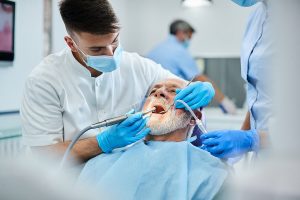Los Angeles County residents are still recovering from the devastation of the Palisades and Eaton fires, and new data show that emergency department (ED) visits for wildfire-related issues jumped eight-fold in the days after the fires broke out.
In fact, the new data “likely underestimate the prevalence of wildfire-associated ED encounters,” a team led by Emily Kajita of the Los Angeles County Department of Public Health (LACDPH) concludes.
Fueled by bone-dry conditions and winds reaching gusts of 100 mph, the Palisades and Eaton fires roared through tens of thousands of acres, destroying more than 16,000 structures and killing 29 people.
The fires took weeks to put out completely and dirtied the air Los Angelenos breathed during that time.
Kajita and colleagues looked at LACDPH data on ED encounters occurring in 90% of hospitals across the county.
Overall, ED visits actually dropped by 9% in the first six days after the fires broke out, compared to the three weeks prior.
The researchers note that this is in keeping with ED trends during natural disasters generally, as people focus more on moving away from affected areas; schools and businesses are shut down; and many folks take added precautions around their health.
However, between Jan. 7 and 12 there was a sharp spike in ED encounters for illnesses and injuries linked directly to the fires.
Rates for these visits spiked eight-fold, from 0.06% of encounters before the blazes began to 0.52% of visits, peaking at 1% of ED encounters on Jan. 8, the data showed.
Most of these wildfire-related visits involved burns or eye-related symptoms.
There was no notable increase during the six-day period in ED encounters for heart- or asthma-related issues, as has been seen during wildfire events occurring elsewhere, Kajita’s group noted.
That might be due to the fact that the county was already deep into “peak” viral illness season, so added encounters for respiratory issues might have been masked by that seasonal trend. These and other factors may have led to an underestimation of true ED visits prompted by the wildfires, they said.
The findings offer lessons on how to better prepare for future fire events, the team said.
“Sharing communications with the general public about the importance of minimizing exposures to wildfire smoke, especially during the first few days of wildfire events” could ease the impact of such disasters on public health, the researchers said.
The findings were published Feb. 6 in Morbidity and Mortality Weekly Report, a journal of the U.S. Centers for Disease Control and Prevention.
More information
Find out how you can minimize the health impact of wildfire smoke at the California Air Resources Board.
SOURCE: Morbidity and Mortality Weekly Report, Feb. 6, 2025
Source: HealthDay
Copyright © 2025 HealthDay. All rights reserved.

















